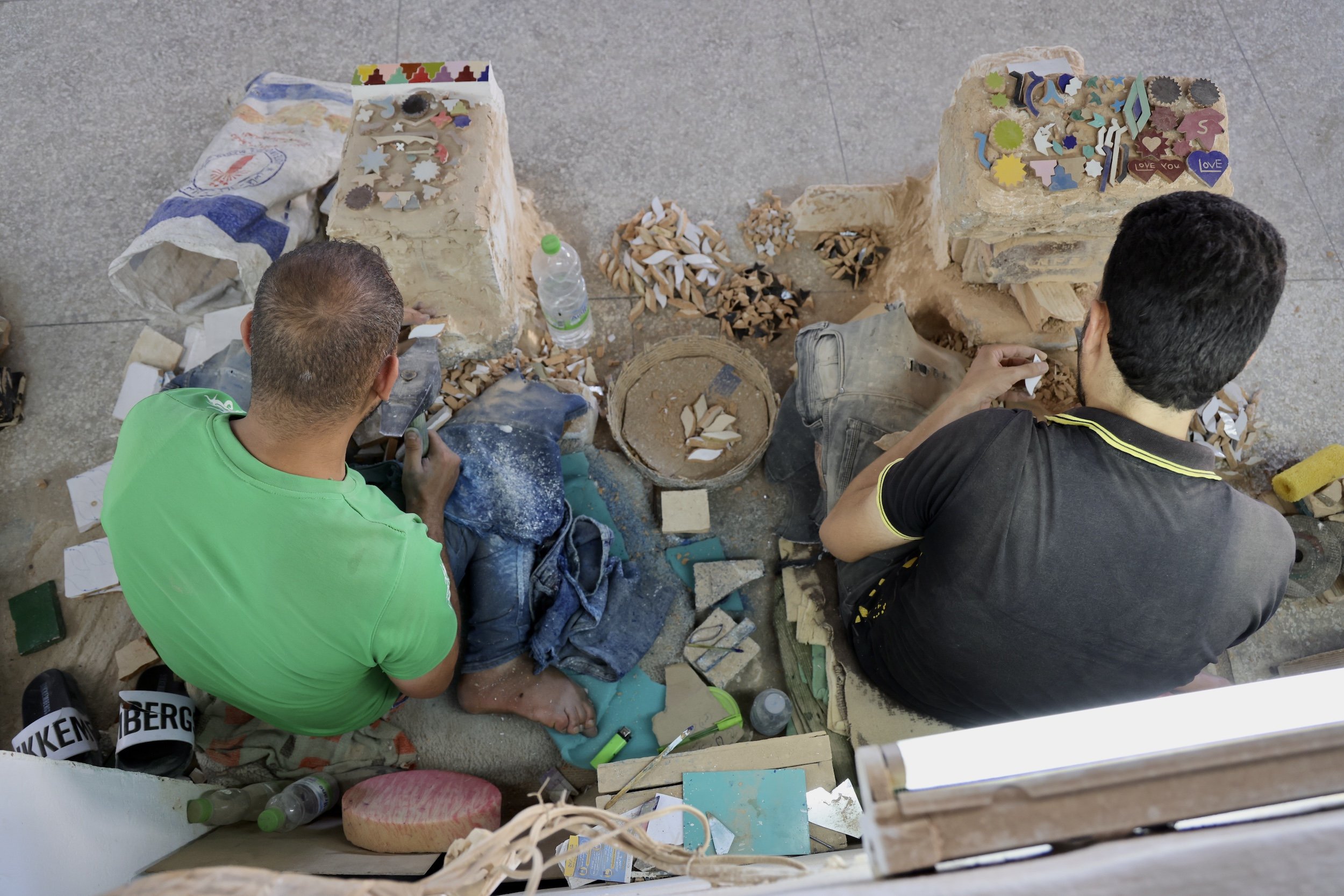OJALÁ
(to hope for; derived from the Arabic “inshallah” meaning God willing)
Situated at the northern tip of Africa, Morocco is a land woven from a rich tapestry of history and culture. Over centuries, it has been shaped by the influences of the Imazighen, Muslim Arabs, Moors, French, and Spanish, each leaving an indelible mark on its cultural landscape. The legacy of these connections extends far beyond Morocco, stretching across Andalusia to Mexico, creating a shared heritage that binds these cultures through time.
This vibrant heritage is beautifully reflected throughout the country. The colorful mosaics that adorn Moorish mosques, the blend of Arabic, French, and Spanish that resonates in the bustling medinas, and the soulful calls to prayer that fill the air all testify to Morocco’s layered past. These cultural echoes link Morocco not only to Spain but also to the Spanish-influenced traditions that traveled to the Americas, particularly Mexico.

THE FREE PEOPLE
Long before the arrival of the Arabs in the 7th century, the Imazighen—meaning "free people"—were the original stewards of Morocco's land. Indigenous to the region, these tribes traversed the Sahara Desert and the Mediterranean basin, engaging in trade and shaping the early cultural foundations of the area. Known widely as "Berbers," a term derived from the Greek word for "foreigner" or "barbaric," the Imazighen played a crucial role in the region's history, influencing the cultural currents that flowed through the Mediterranean and beyond.
Following the Arab invasion, the Imazighen gradually embraced Islam, weaving new beliefs into their enduring traditions. Today, they remain a diverse people, divided into distinct groups with their own dialects: the Rifians in the North, the Shluh in the southeast, and the Berraber in the central regions and the Sahara.

THE ART OF ZELLIJ
Moroccan Zellij, the intricate tilework that decorates the country's architecture, is a tribute to this multicultural heritage. Initially inspired by Roman and Byzantine mosaics, Zellij appeared in Morocco in the 10th century and evolved under Arab influence, becoming more colorful and geometric. These handcrafted tiles transformed Moroccan architecture and found their way into Andalusia, where they influenced Spanish designs. Later, these patterns crossed the Atlantic, leaving traces in Mexican artistry, which echoes the Moorish styles that originated in Morocco.

CHEFCHAOUEN
In the northern city of Chefchaouen, the convergence of these interconnected cultures is beautifully evident. Nestled in the Rif Mountains, Chefchaouen's iconic blue-washed buildings and winding alleys create an almost ethereal atmosphere. For those familiar with Mexico, the city’s charm might evoke the spirit of Guanajuato, a reflection of the shared influences that link these distant lands.
This connection between Morocco, Spain, and Mexico is not mere coincidence. During the 15th and 16th centuries, Chefchaouen became a sanctuary for Andalusian Muslim and Jewish communities fleeing the Reconquista in Spain. These refugees, together with the local Imazighen, shaped Chefchaouen's distinctive cultural identity, a blend of traditions that has endured through generations and carried its influence even to the Americas.


MARRAKECH
Further south, Marrakech stands as a vibrant testament to Morocco’s historical legacy. Founded in 1062 AD by Abu Bakr ibn Umar of the Imazighen Almoravid dynasty, Marrakech is a city where vibrant souks, Moorish architecture, and a blend of Arab, Imazighen, and French cultures converge. Known as the "Red City," it captivates visitors with its lively Jemaa el-Fnaa square, ancient medina, and the majestic mosques, tombs, and palaces adorned with intricate mosaic facades that symbolize its architectural splendor. This cultural interplay, rooted in Moorish and Andalusian influences, bridges Morocco’s artistic traditions with those that flourished in Spain and later reached the shores of Mexico.



















